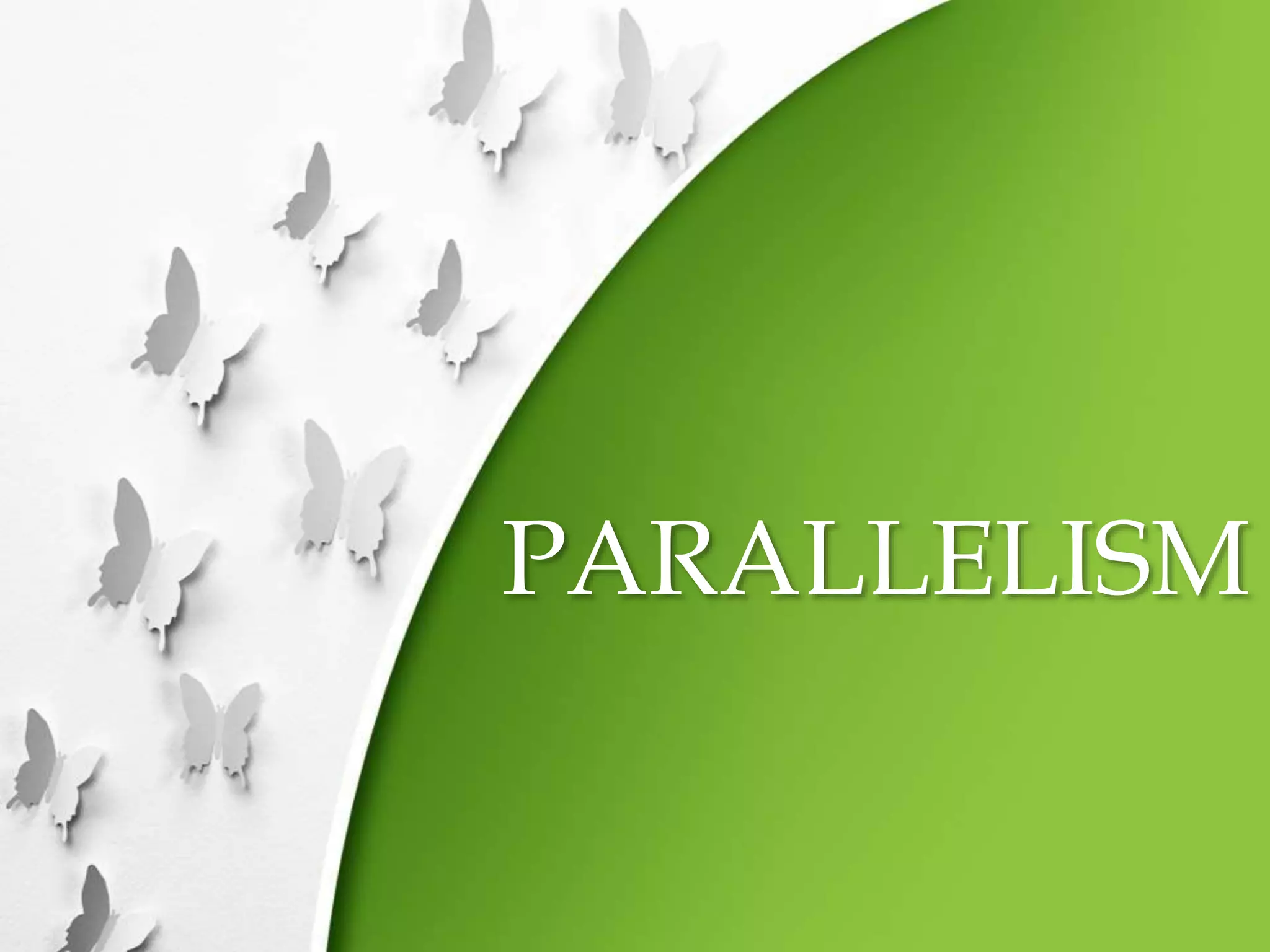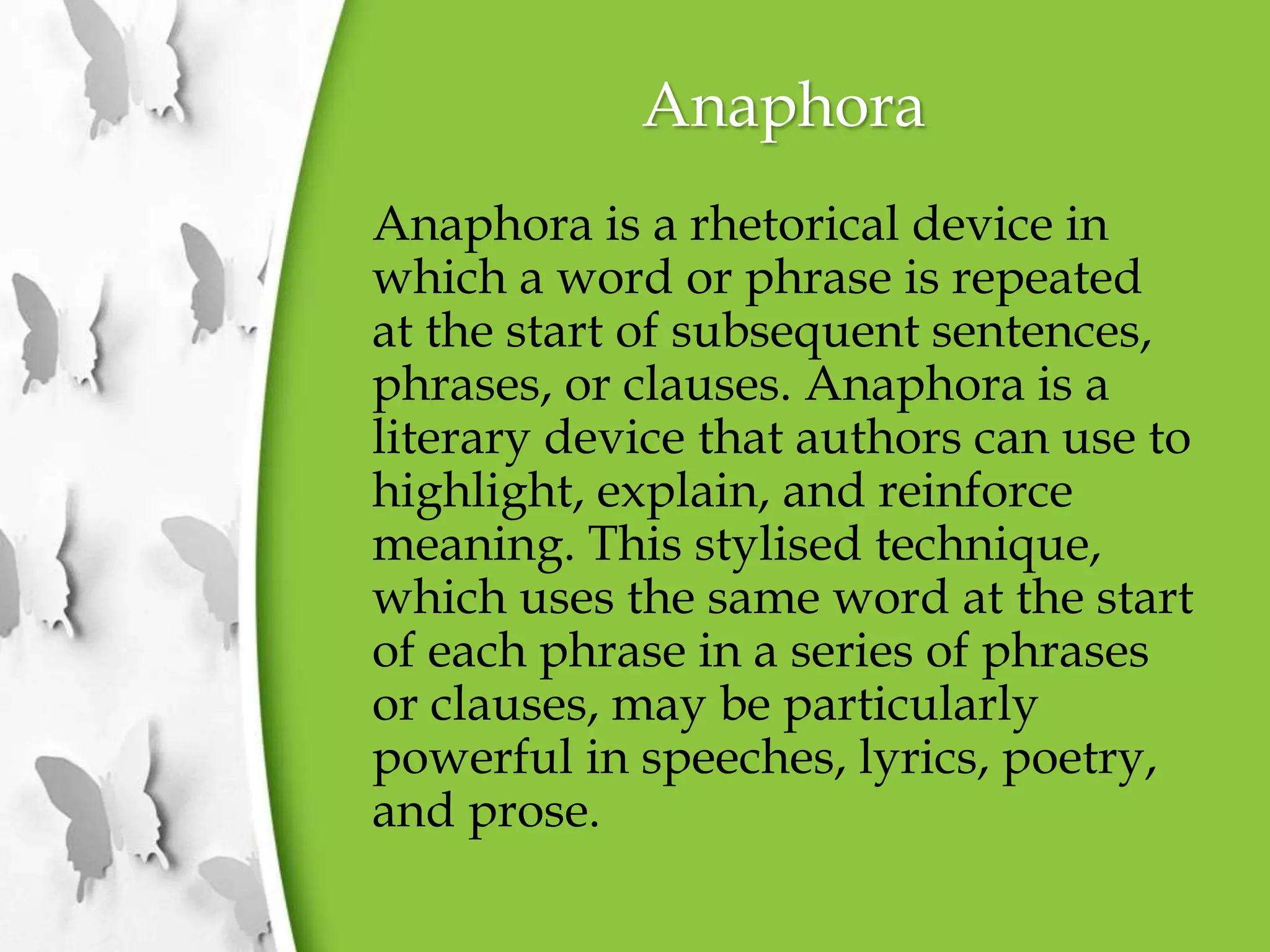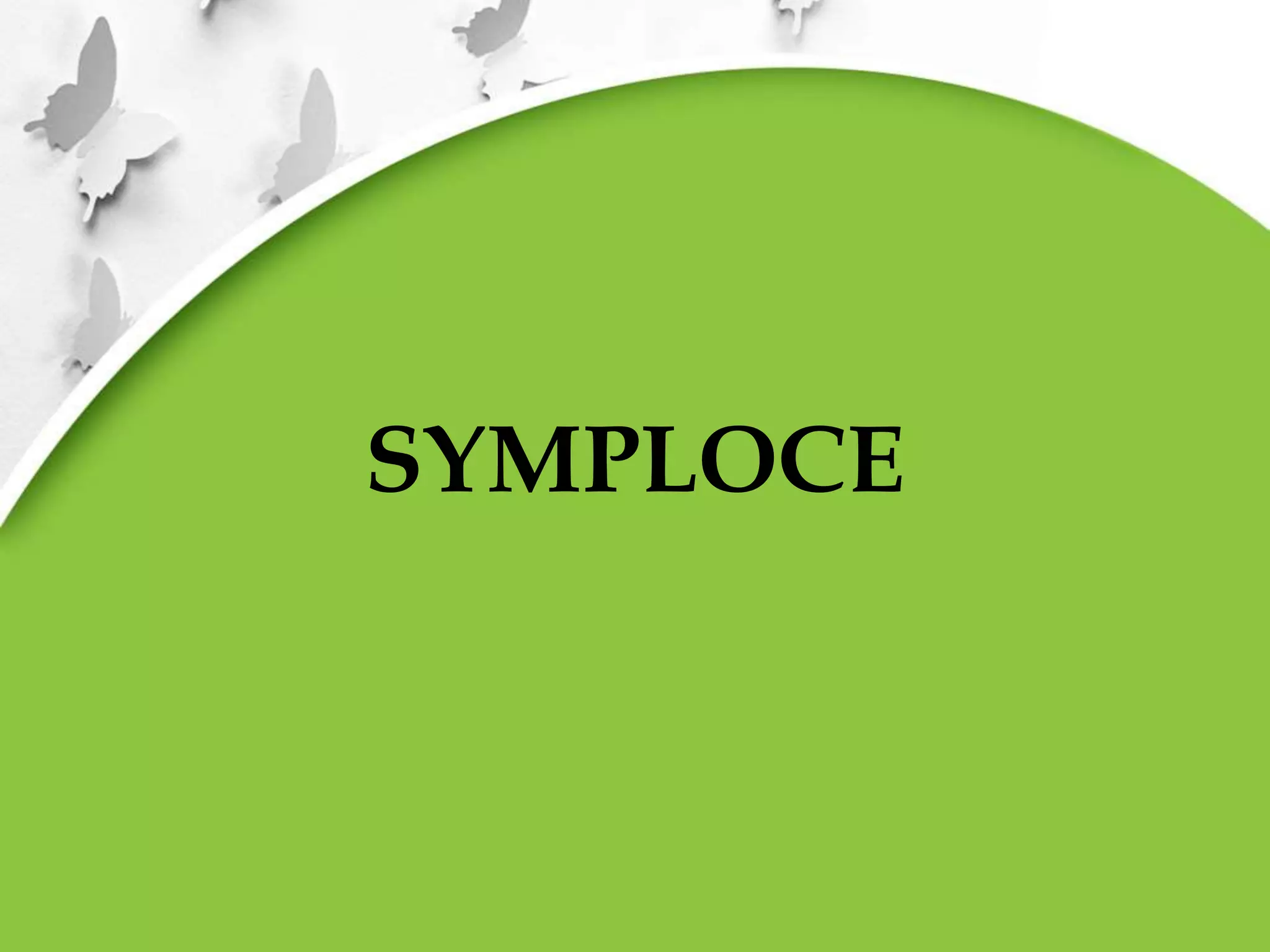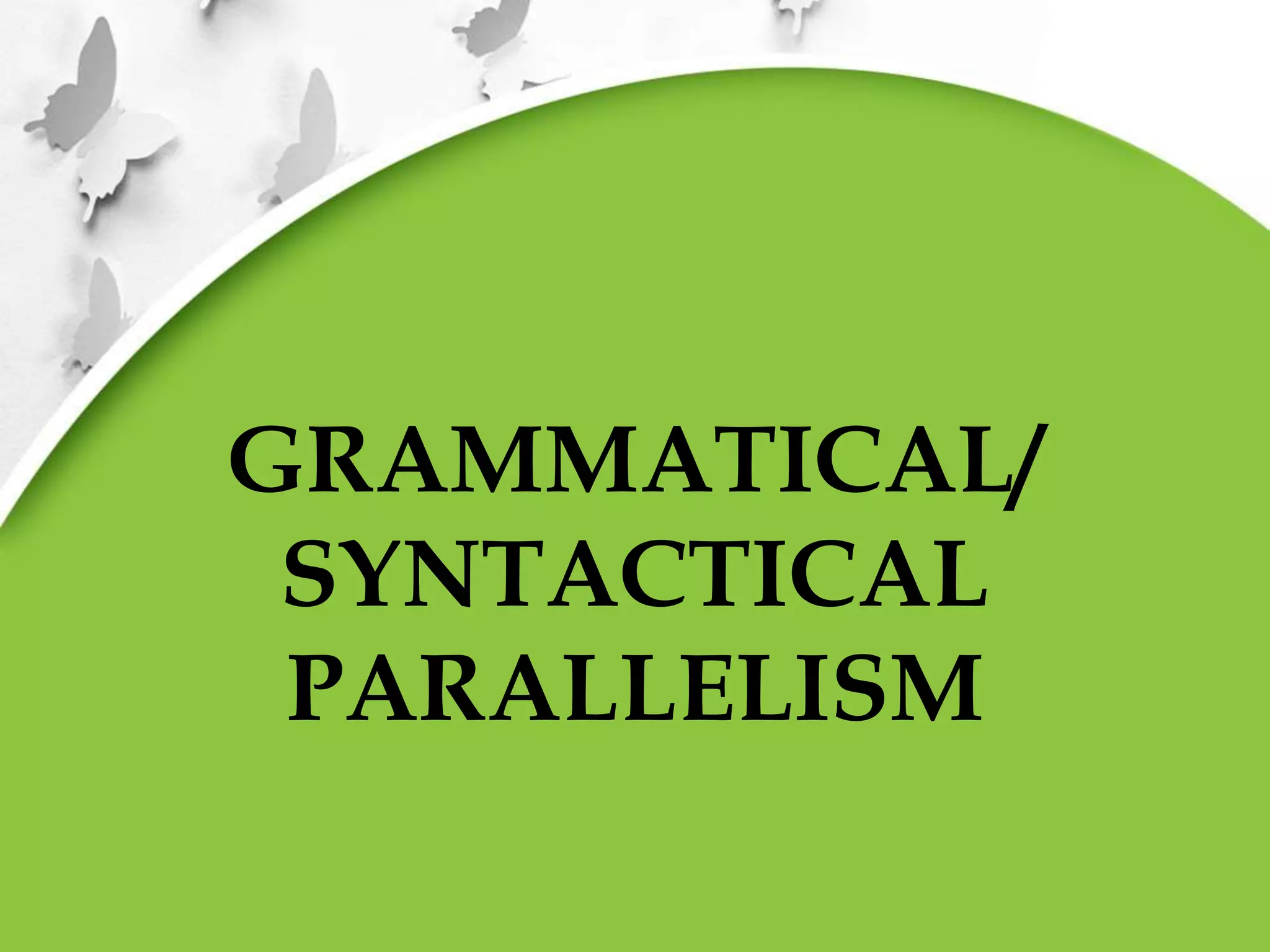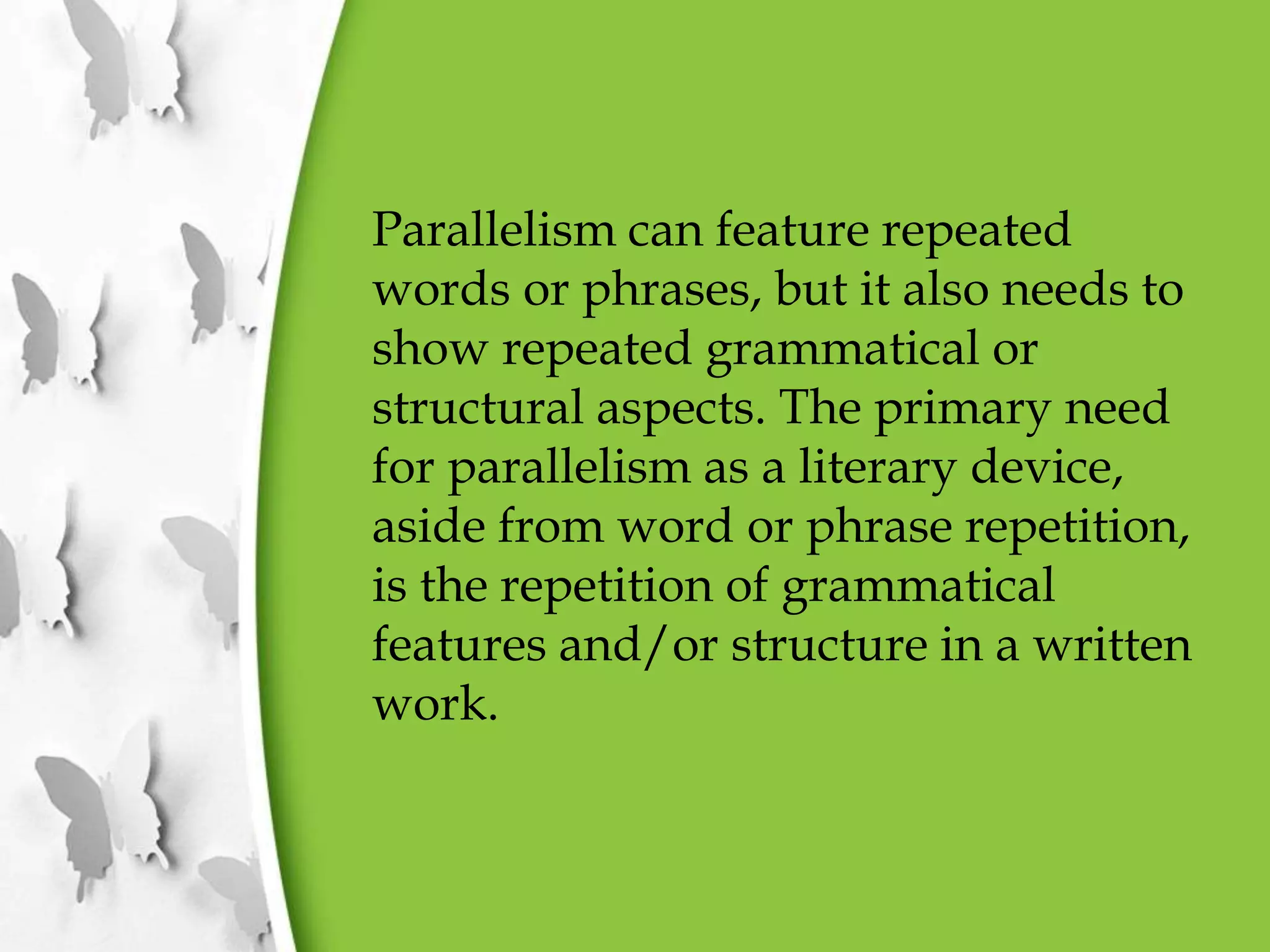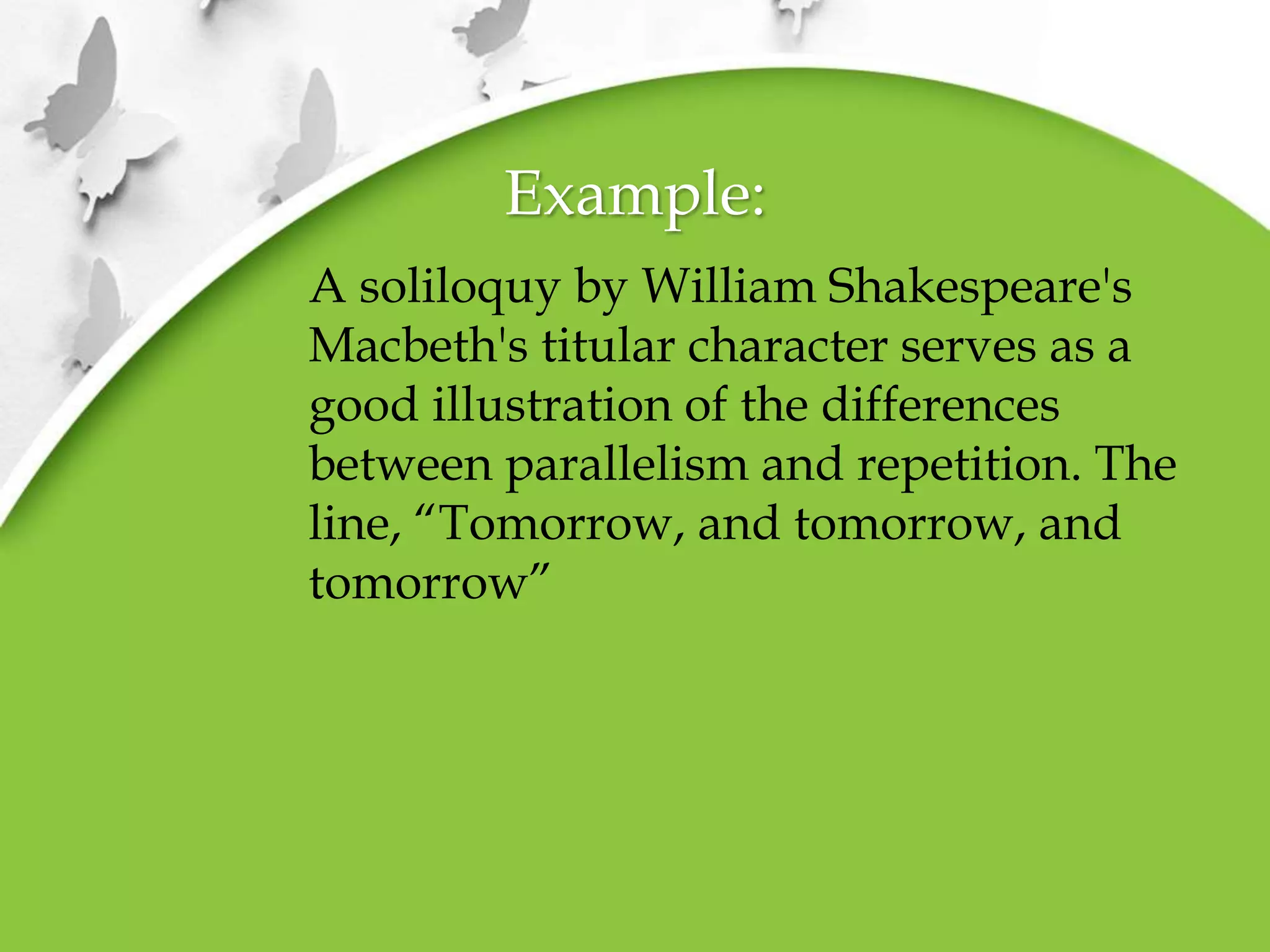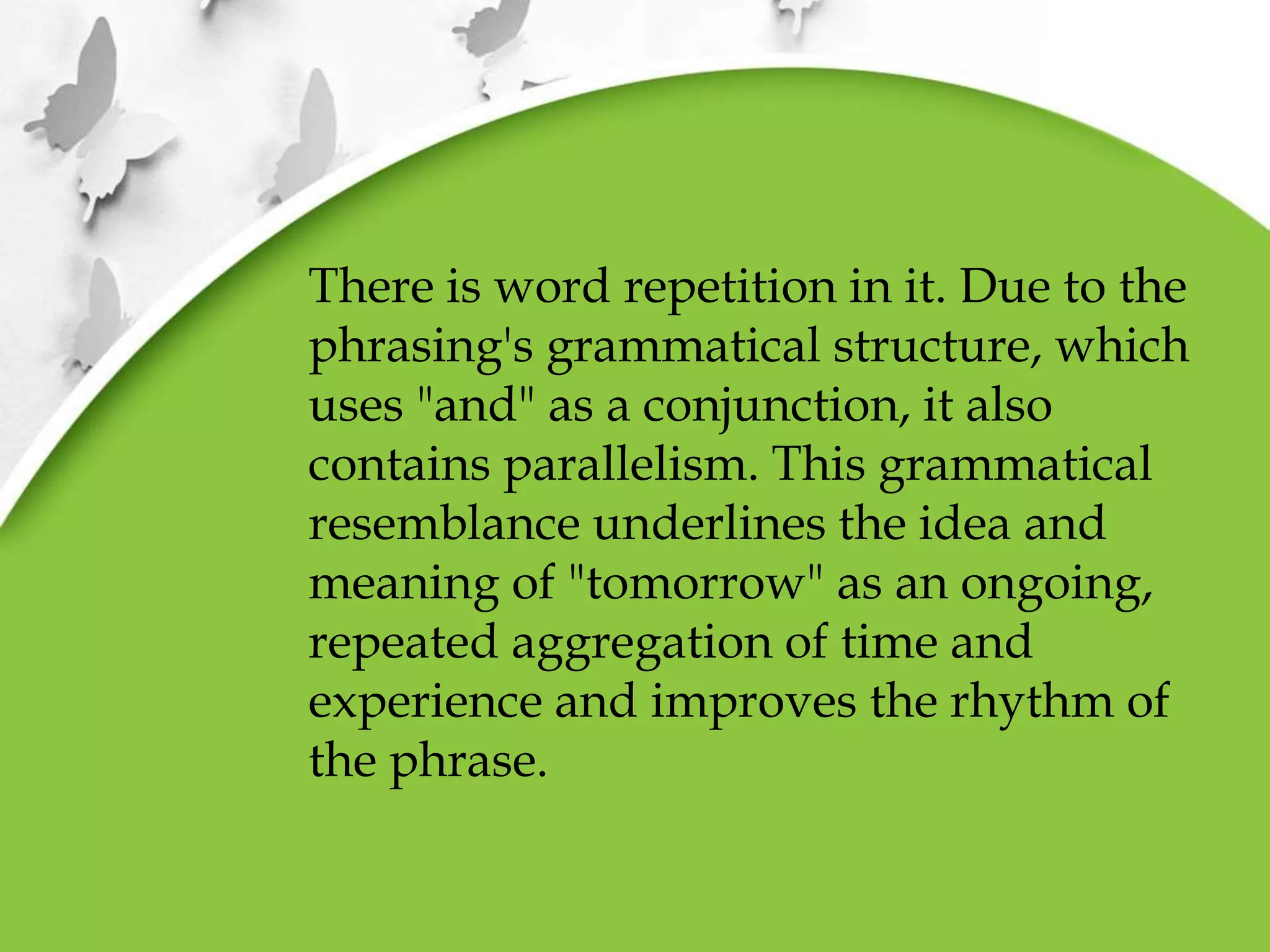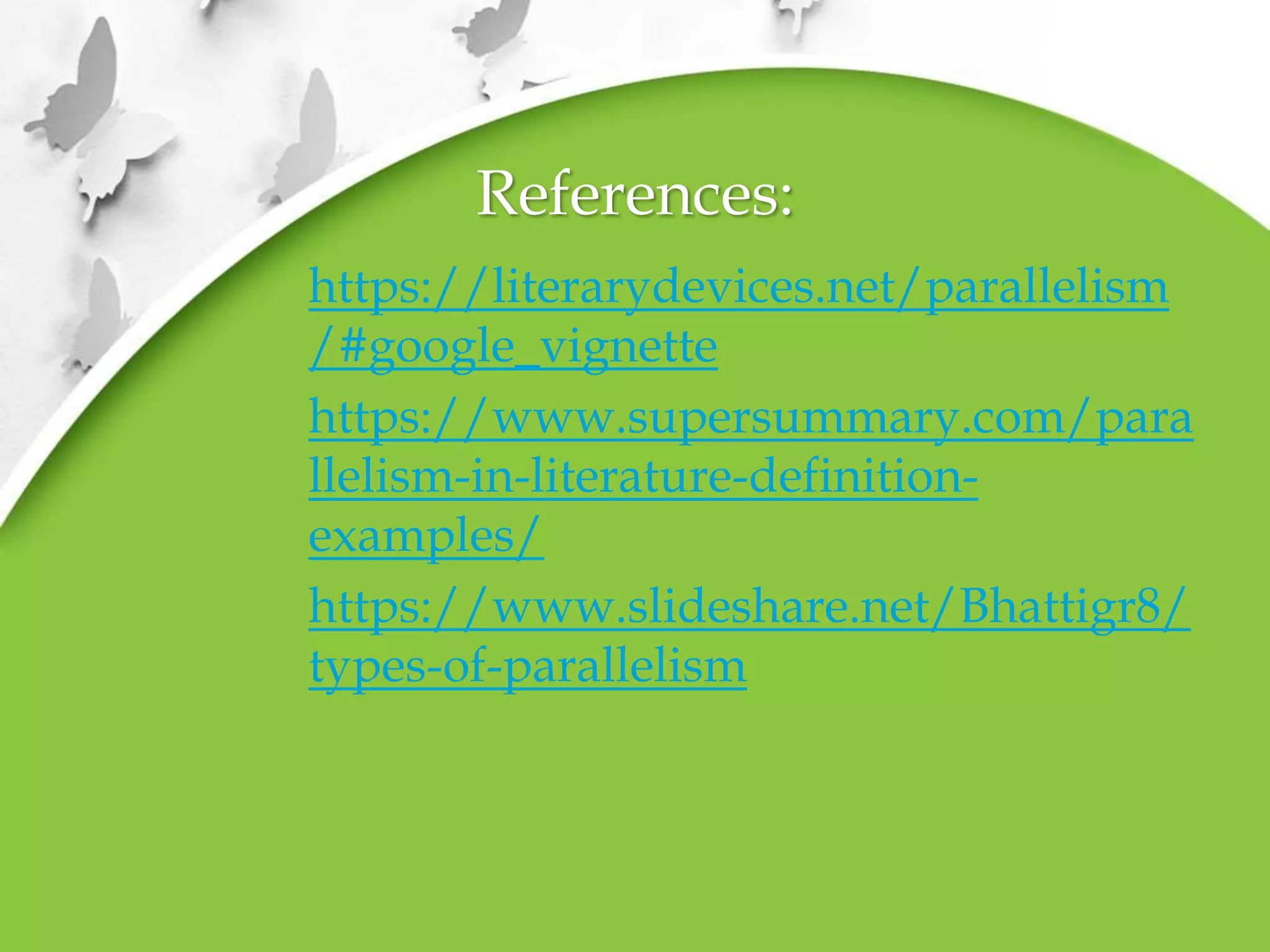This document discusses parallelism, which is a rhetorical and grammatical technique of repeating linguistic elements within or across sentences to create balance. There are several types of parallelism discussed, including anaphora, antithesis, asyndeton, epistrophe, symploce, and chiasmus. These involve repeating words or phrases at the beginning, end, or in reverse order of clauses. Parallelism is used in speeches, poems, and prose to make the writing more impactful and comprehensible. Examples from literary works are provided to illustrate each type of parallelism. The document also distinguishes parallelism from mere repetition and discusses extended parallelism.
